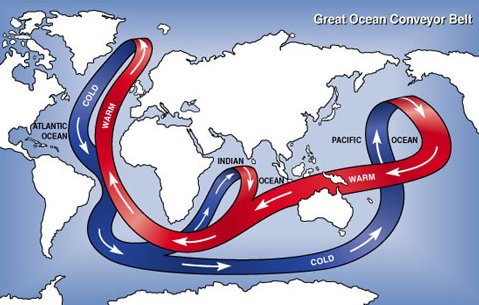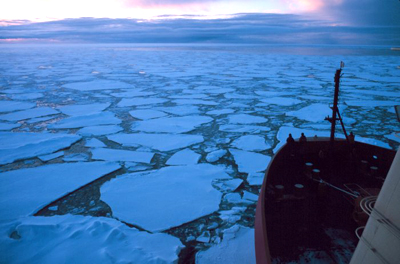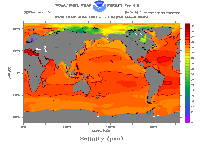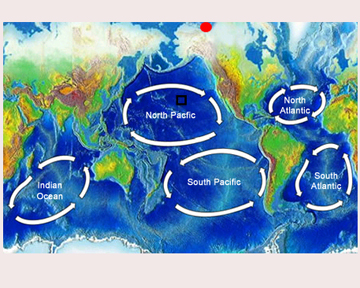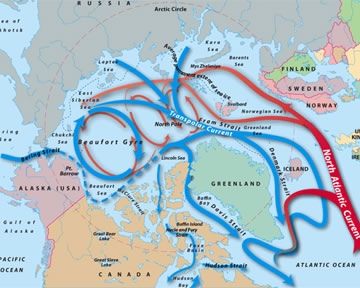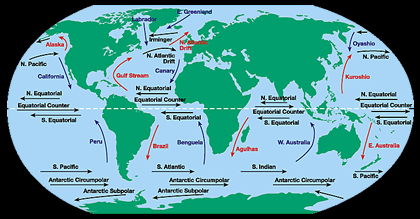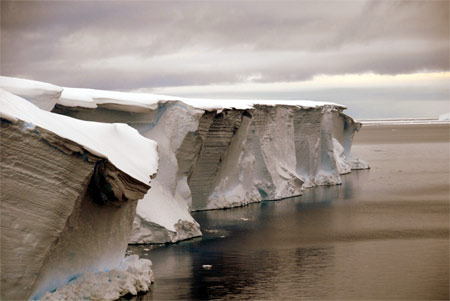Click on image for full size
Image courtesy Argonne National Laboratory
Thermohaline Circulation: The Global Ocean Conveyor
The world’s oceans, the Pacific, the Atlantic, the Indian, the Arctic, and the Southern Ocean, have different names, but they are really not that different. Water moves between them all the time. So they are all connected in one global ocean.
If you visit a shoreline and watch the ocean, you will see water on the move. Waves crash on the beach. Tides move water back and forth twice a day. These are some of the small scale ways that seawater moves. Seawater moves in larger ways too.
There is a large pattern to the way that seawater moves around the world ocean. This pattern is known as the Global Ocean Conveyor or thermohaline circulation. It affects water at the ocean surface and all the way to the deep ocean. It moves water around the world.
Why does the water move around the ocean? The water moves because of differences in density. Water that is denser sinks below water that is less dense. Changes in temperature and salinity can change the density of seawater.
Cold water is denser than warm water.
- Water gets colder when it loses heat to the atmosphere, especially in the chilly polar regions.
- Water gets warmer when it is heated by incoming solar energy, especially in the warm tropics.
Saltier water is denser than less salty water.
- Water gets saltier if there is a lot of evaporation.
- Water gets less salty if freshwater from melting ice or precipitation is added.
In the Atlantic, seawater moves because of temperature differences right now. Water heated near the equator travels at the surface of the ocean north into high latitudes where it loses some heat to the atmosphere. The cooled water sinks to the deep ocean and travels the world ocean, possibly not surfacing for hundreds or even as much as a thousand years.


